The Convergence of Technology and Sustainability
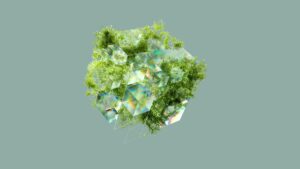
We live in an era of unprecedented transformation. On one hand, we face environmental, social, and governance (ESG) challenges of historic magnitude: climate change, biodiversity loss, resource scarcity, growing inequalities, and demands for greater corporate transparency and accountability. On the other, we are witnessing a technological revolution that is redefining nearly every aspect of society and the economy, with exponential advances in artificial intelligence (AI), blockchain, the Internet of Things (IoT), cloud computing, big data analytics, and other emerging technologies.
The intersection of these two transformative forces—the urgency of sustainability and the power of technological innovation—is creating fertile ground for disruptive solutions that can dramatically accelerate the transition to a more sustainable and inclusive future. This convergence is not just a passing trend but a strategic imperative for businesses, governments, and civil society seeking to address ESG challenges effectively and efficiently.
Advanced digital technologies offer unprecedented capabilities to monitor, analyze, optimize, and transform complex systems. They enable the collection and processing of vast amounts of data in real time, identifying patterns invisible to the human eye, automating processes, creating new business models, facilitating global collaboration, and increasing transparency across value chains. When applied to sustainability challenges, these capabilities can catalyze systemic changes that would be impossible or prohibitively slow using conventional approaches.
However, the relationship between technology and sustainability is complex and multifaceted. The same technologies that can drive sustainable solutions can also, if misapplied, exacerbate existing problems or create new challenges. The energy consumption of data centers, the planned obsolescence of electronic devices, the mining of rare materials for batteries and components, and issues of privacy and equitable access to technology are just a few examples of the tensions that must be carefully managed.
This article explores in depth how emerging technologies are being applied to address ESG challenges, transforming industries and creating new opportunities for sustainable innovation. We will examine how artificial intelligence is optimizing resource use and predicting environmental risks; how blockchain is revolutionizing traceability and transparency in supply chains; how IoT enables real-time monitoring of ecosystems and infrastructure; and how these and other technologies are converging to create smarter, more efficient, and more sustainable systems.
We will analyze concrete cases of these technologies being applied in key sectors such as energy, agriculture, manufacturing, transportation, construction, and finance, highlighting both successes and challenges. We will also discuss the broader implications of this technological revolution for public policy, business models, investments, and consumer behavior.
Finally, we will look to the future, exploring emerging technologies and trends that could shape the next wave of sustainability innovation, and reflecting on how we can ensure technological progress is directed toward creating a more sustainable, just, and prosperous future for all.
The journey toward a sustainable world is complex and challenging, but the convergence of technology and sustainability offers reasons for optimism. By understanding and harnessing the transformative potential of this convergence, we can significantly accelerate progress toward the most pressing ESG goals of our time.
Chapter 1: Artificial Intelligence and Machine Learning – Decoding the Complexity of Sustainability
Artificial intelligence (AI) and machine learning are among the most powerful and versatile technologies today, with the potential to transform nearly every aspect of sustainability. Their ability to process and analyze enormous volumes of data, identify complex patterns, make accurate predictions, and optimize systems in real time provides unprecedented tools to tackle environmental, social, and governance challenges that once seemed intractable.
1.1. Fundamentals of AI for Sustainability

Before diving into specific applications, it is important to understand the main types of AI relevant to sustainability:
- Machine Learning (ML): Algorithms that learn patterns from data and improve their performance with experience, without being explicitly programmed for each task. Particularly useful for prediction, classification, and optimization in complex environmental contexts.
- Deep Learning: A subset of ML based on artificial neural networks with multiple layers, capable of processing unstructured data like images, videos, and natural language. It has revolutionized visual pattern recognition, crucial for environmental monitoring via satellites and sensors.
- Computer Vision: Enables computers to “see” and interpret the visual world, with applications ranging from forest and wildlife monitoring to energy infrastructure inspection and waste classification for recycling.
- Natural Language Processing (NLP): Empowers machines to understand, interpret, and generate human language, facilitating the analysis of sustainability reports, environmental news, regulations, and stakeholder feedback.
- Recommendation Systems: Algorithms that suggest actions or decisions based on historical and contextual data, useful for optimizing energy consumption, transportation routes, or sustainable consumption choices.
- Generative AI: Systems capable of creating new content (text, images, music, design), with emerging applications in sustainable design, climate scenario simulation, and sustainability communication.
The application of AI for sustainability is based on several fundamental principles:
- Data as Foundation: The quality, quantity, and representativeness of data are crucial for the success of AI applications. Sensors, satellites, IoT devices, and digital platforms are generating unprecedented volumes of environmental and social data that feed these systems.
- Complexity and Systems: Sustainability challenges involve complex systems with multiple interconnected variables. AI is particularly suited to model and optimize such systems, identifying nonlinear relationships and emergent effects.
- Scale and Speed: AI enables rapid scaling of solutions and real-time information processing, essential for addressing urgent global challenges like climate change.
- Personalization and Contextualization: Effective sustainable solutions often need to be tailored to specific local contexts. AI can help customize interventions based on particular conditions and needs.
- Automation and Augmentation: AI can automate repetitive tasks (freeing human resources for more creative and strategic work) and augment human capabilities, providing insights and recommendations that inform better decisions.
1.2. AI for Environmental Monitoring and Protection
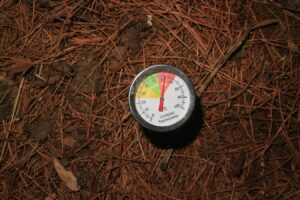
One of the most impactful applications of AI is in monitoring and protecting natural ecosystems:
- Forest Monitoring and Deforestation Prevention: AI systems analyze satellite imagery to detect deforestation in near real time, enabling rapid interventions. Brazil’s DETER system, developed by INPE, uses algorithms to identify changes in Amazon forest cover. Startups like Pachama use AI to verify and monitor forest conservation and carbon sequestration projects, increasing the reliability of carbon credits.
- Biodiversity Conservation: AI-powered cameras and image recognition are revolutionizing wildlife monitoring, automatically identifying species in millions of camera-trap photos. The Wildlife Insights project, a collaboration between Google, Conservation International, and other partners, uses computer vision to identify animals in images, drastically speeding up biodiversity data analysis. ML algorithms also help predict species migration patterns, identify critical habitats, and optimize conservation strategies.
- Water and Air Quality Monitoring: Connected sensors combined with AI enable continuous monitoring of water and air quality, detecting pollutants and alerting to public health risks. Singapore’s Smart Water Assessment Network (SWAN) uses floating sensors equipped with AI to monitor water quality parameters in reservoirs in real time.
- Natural Disaster Prediction and Mitigation: AI models analyze weather, topographic, and historical data to predict floods, wildfires, and other natural disasters with greater accuracy and lead time. The WIFIRE system, developed by the University of California, uses ML to predict wildfire spread, helping firefighters allocate resources more efficiently.
- Oceanography and Marine Protection: AI-equipped autonomous underwater vehicles collect data on ocean health, while computer vision algorithms analyze images to monitor coral reefs, detect illegal fishing, and track plastic pollution. The CORaiL project, a partnership between Accenture, Intel, and the Sulubaaï Environmental Foundation, uses AI to monitor coral reef health in the Philippines.
1.3. AI for Energy Efficiency and Renewable Energy
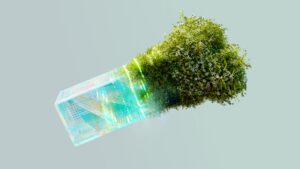
The transition to a clean and efficient energy system is fundamental to sustainability, and AI is accelerating this transformation:
- Renewable Generation Forecasting: ML algorithms significantly improve solar and wind generation forecasts by analyzing weather data, historical patterns, and real-time sensor data. This enables better integration of intermittent sources into the grid and reduces the need for fossil fuel backup. Google DeepMind developed AI models that increased the value of wind energy by 20% by predicting output 36 hours in advance.
- Smart Grids: AI is essential for managing bidirectional and decentralized electricity grids, balancing supply and demand in real time, detecting anomalies, and optimizing energy flow. Systems like AutoGrid use ML to predict demand peaks and manage distributed energy resources.
- Building Energy Optimization: AI systems analyze sensor data, occupancy patterns, weather conditions, and other factors to optimize heating, ventilation, air conditioning, and lighting in real time. Google reduced energy consumption in its data centers by 40% using AI to optimize cooling systems.
- Predictive Maintenance for Energy Infrastructure: ML algorithms analyze sensor data to predict equipment failures before they occur, reducing downtime and extending the lifespan of wind turbines, solar panels, and other energy assets. GE uses its Predix system to monitor wind turbines and predict maintenance needs, increasing availability and reducing costs.
- Discovery of New Materials for Clean Energy: AI is accelerating the discovery and development of new materials for batteries, solar cells, and other clean energy technologies by simulating and testing thousands of material combinations virtually. The Materials Genome Initiative uses ML to accelerate the discovery of materials for energy storage and solar conversion.
- Smart Demand Response: AI-powered platforms coordinate demand response, incentivizing consumers to reduce energy use during peak demand periods in exchange for financial rewards. OhmConnect in California uses AI to orchestrate residential demand response, aggregating small reductions from thousands of homes to create a “virtual power plant.”
1.4. AI for Sustainable Agriculture and Food Systems

Agriculture faces the challenge of feeding a growing population while reducing its environmental impact. AI is driving “precision agriculture” and transforming food systems:
- Precision Agriculture: Combining satellite, drone, ground sensor, and weather data, AI algorithms help farmers optimize water, fertilizer, and pesticide use, applying them only where and when needed. Brazilian startup Solinftec uses AI to analyze sensor data from farm equipment and recommend precise interventions, reducing input use while increasing productivity.
- Crop Health Monitoring: Computer vision systems analyze drone or smartphone images to detect plant diseases, pests, and nutrient deficiencies early. Plantix developed an app that allows farmers to photograph diseased plants and receive automated diagnoses via AI.
- Agricultural Robotics: AI-guided robots perform tasks like precision planting, mechanical weed control (reducing herbicides), and selective harvesting. FarmWise developed robots that use computer vision to identify and mechanically remove weeds, reducing herbicide needs.
- Yield Prediction and Planning: ML models predict crop yields based on historical data, current conditions, and weather forecasts, helping farmers and supply chains plan more efficiently. CropX uses soil sensors and AI to predict yields and optimize irrigation.
- Food Waste Reduction: AI algorithms optimize food supply chains, improving demand forecasting, monitoring conditions during transport and storage, and identifying opportunities to reduce losses. Winnow uses computer vision to identify and quantify food waste in commercial kitchens, helping reduce waste by up to 50%.
- Agroforestry and Regenerative Systems: AI is helping model and optimize complex agricultural systems like agroforestry and regenerative agriculture, which integrate multiple species and practices to enhance biodiversity and soil health. reNature uses AI to develop agroforestry models tailored to different contexts and crops.
1.5. AI for Circular Economy and Waste Management
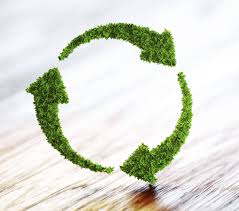
The transition to a circular economy—eliminating waste and keeping products and materials in use—is being accelerated by AI applications:
- Advanced Waste Sorting: Computer vision systems identify and classify different materials on recycling conveyor belts with speed and accuracy surpassing human capabilities. AMP Robotics developed AI-powered robots that can identify and separate recyclable materials in fractions of a second, significantly increasing recovery rates.
- Design for Circularity: AI algorithms analyze existing products and suggest design modifications to improve recyclability, repairability, and disassembly. Granta Design (now part of Ansys) uses AI to analyze materials and product designs for circularity.
- Secondary Materials Marketplaces: AI-powered platforms connect waste generators with potential users, turning one industry’s “waste” into valuable resources for another. The Materials Marketplace uses algorithms to match waste streams with material needs.
- Reverse Logistics Optimization: AI algorithms optimize routes and processes for collecting, sorting, and processing end-of-life products, reducing the costs and environmental impacts of reverse logistics. Optoro uses ML to determine the most profitable and sustainable destination for returned products.
- Lifespan Prediction and Predictive Maintenance: AI models predict when products are nearing failure, enabling preventive maintenance that extends their useful life. Augury uses acoustic sensors and AI to detect impending failures in industrial machines, prolonging their operational life.
- Material Flow Tracking: Combining IoT, blockchain, and AI, advanced systems track materials across multiple use cycles, facilitating value recovery and extended producer responsibility. Circulor uses these technologies to track materials like cobalt and lithium in battery supply chains.
1.6. AI for Smart and Sustainable Cities
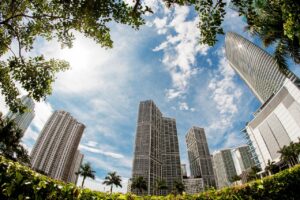
Cities concentrate population, resource consumption, and emissions, making them crucial focal points for sustainability innovation. AI is transforming urban management:
- Smart Urban Mobility: AI algorithms optimize traffic lights in real time, reducing congestion and emissions. Vehicle-sharing systems use AI to predict demand and optimize fleet distribution. Waymo and others are developing autonomous vehicles that could increase urban transport efficiency. In Pittsburgh, the Surtrac system uses AI to coordinate traffic lights, reducing wait times by 40% and emissions by 21%.
- Smart Water Management: Sensors and AI detect leaks in distribution networks, optimize water pressure and quality, and predict demand to improve urban water efficiency. Startup WINT uses AI to detect anomalies in water consumption that indicate leaks, reducing waste by up to 25%.
- Urban Energy Efficiency: AI systems integrate data from multiple sources to optimize energy consumption at neighborhood or city scale, managing street lighting, district heating/cooling systems, and other services. Copenhagen uses AI to optimize its district heating system, reducing costs and emissions.
- Data-Driven Urban Planning: AI models analyze movement patterns, space usage, and other data to inform urban planning decisions that promote sustainability and quality of life. The Sidewalk Labs (Google) project in Toronto used AI to simulate different urban development scenarios and their impacts.
- Environmental Quality Monitoring: Sensor networks combined with AI monitor air quality, noise levels, urban heat islands, and other environmental parameters, enabling targeted interventions. Startup Clarity uses low-cost sensors and AI to create detailed air pollution maps in cities.
- Urban Waste Management: Smart trash bins with sensors and AI optimize waste collection routes, reducing fuel consumption and emissions. Bigbelly developed smart bins that compact waste and notify when full, enabling route optimization.
1.7. AI for Sustainable Finance and ESG Investing

The financial sector plays a crucial role in the transition to a sustainable economy, and AI is transforming how ESG risks and opportunities are assessed and integrated into financial decisions:
- ESG Data Analysis: NLP algorithms analyze vast volumes of sustainability reports, news, social media, and other unstructured sources to assess corporate ESG performance more accurately and objectively. Truvalue Labs (now part of FactSet) uses AI to analyze millions of data points from public sources to evaluate ESG risks not disclosed by companies.
- Climate Risk Assessment: AI models combine climate, geospatial, and financial data to assess asset and portfolio exposure to physical risks (like floods and droughts) and transition risks (like carbon policies). Jupiter Intelligence uses AI to model climate risks for critical infrastructure and real estate portfolios.
- Sustainable Portfolio Optimization: Advanced algorithms optimize investment portfolios to balance financial returns with ESG impacts, considering multiple criteria and investor preferences. Arabesque uses ML to assess the sustainability and financial performance of global companies.
- Greenwashing Detection: AI can identify discrepancies between sustainability claims and actual practices, helping combat false environmental claims. RepRisk uses NLP to identify ESG risks in companies from public sources in 20 languages.
- Targeted Climate Finance: AI-powered platforms connect sustainable projects with appropriate investors, reducing transaction costs and increasing capital flows to climate solutions. Raise Green created a platform that uses AI to connect investors with local clean energy projects.
- Impact Measurement: ML algorithms help quantify and attribute environmental and social impacts of investments, enabling better measurement of “dual returns” (financial and impact). The Impact Management Project uses AI to help investors measure and manage their impacts.
1.8. Challenges and Ethical Considerations of AI for
Despite its immense potential, applying AI to sustainability also presents significant challenges that must be addressed:
- AI’s Environmental Footprint: Training AI models, especially deep learning, can consume enormous amounts of energy and generate significant carbon emissions. Researchers at the University of Massachusetts estimated that training a single large NLP model can emit as much CO2 as five cars over their lifetimes. Developing more efficient algorithms and using renewable energy for data centers is essential.
- Bias and Equity: AI algorithms can perpetuate or amplify biases in training data, potentially leading to unfair or discriminatory outcomes. For example, AI systems for allocating environmental resources or assessing climate risks may disadvantage already marginalized communities if not carefully designed.
- Transparency and Explainability: Many advanced AI algorithms, especially deep learning, function as “black boxes,” making it difficult to understand how they reach certain conclusions. This can undermine trust in AI solutions for sustainability challenges.
- Technological Dependence and Digital Divide: Adoption of advanced AI solutions may exacerbate inequalities between regions, businesses, and communities with differing access to technology, data, and expertise. Ensuring broad accessibility of AI’s sustainability benefits is crucial.
- Privacy and Security: Many AI applications for sustainability depend on collecting and analyzing large volumes of data, some potentially sensitive. Ensuring data privacy and security is essential for maintaining public trust.
- Rebound Effect: Efficiency gains from AI may lead to increased consumption if not accompanied by systemic changes. For example, more efficient autonomous vehicles could encourage more travel, offsetting some environmental benefits.
1.9. Conclusion – The Future of the Circular Economy and the Path Forward

The circular economy represents much more than a passing trend or a set of isolated sustainability practices. It constitutes a fundamental reimagining of how our economy can and should function—a model that aligns economic prosperity with environmental regeneration and social well-being. Throughout this article, we have explored the principles, benefits, challenges, and practical applications of the circular economy across various sectors and contexts. In this final chapter, we will synthesize the key conclusions and look ahead to the future, envisioning how the circular economy may evolve in the coming decades and the role each of us can play in this vital transformation.
Why the Circular Economy is Imperative
The transition to a circular economy is not just desirable but imperative for multiple reasons:
-
Planetary Boundaries: Our linear economic model is exceeding critical planetary boundaries, including climate change, biodiversity loss, and disruptions to biogeochemical cycles. The circular economy offers a way to operate within these limits while still meeting human needs.
-
Scarcity and Volatility Risks: Continued reliance on finite resources exposes businesses and economies to growing risks of scarcity, supply chain disruptions, and price volatility. Circularity enhances resilience by diversifying material sources and reducing dependence on virgin resources.
-
Untapped Economic Opportunities: The systematic waste of the linear model represents trillions of dollars in lost value annually. The circular economy unlocks new sources of value creation, drives innovation, and creates jobs in emerging sectors.
-
Evolving Social Demands: Consumers, investors, employees, and regulators are increasingly demanding that businesses adopt more sustainable and transparent practices. The circular economy responds to these evolving expectations and helps build trust and social legitimacy.
-
Alignment with Global Goals: The circular economy directly contributes to multiple UN Sustainable Development Goals (SDGs), including responsible consumption and production (SDG 12), climate action (SDG 13), life below water (SDG 14), life on land (SDG 15), and partnerships for the goals (SDG 17).
Trends Shaping the Future of the Circular Economy
Several transformative trends are converging to accelerate and shape the evolution of the circular economy in the coming decades:
-
Digitalization and the Circular Economy: The convergence of digital technologies and circular principles is creating what some call “Circular Economy 4.0.” The Internet of Things, blockchain, artificial intelligence, augmented reality, and other technologies are enabling unprecedented levels of traceability, resource optimization, dematerialization, and new circular business models. For example, “digital product passports” will allow material tracking across multiple use cycles, facilitating value recovery and ensuring transparency.
-
Circular Bioeconomy and Biomimicry: The integration of the circular economy and bioeconomy is gaining momentum, focusing on the sustainable use of renewable biological resources and applying nature-inspired principles to product and system design. Advances in biotechnology, synthetic biology, and materials engineering are enabling the development of new biomaterials with superior properties and lower environmental impact. Biomimicry—learning from and emulating strategies found in nature—is inspiring innovative circular solutions.
-
Regenerative Circularity: The circular economy is evolving from an initial focus on reducing negative impacts to a more ambitious approach of active regeneration—not just “doing less harm” but “doing good.” This includes practices like regenerative agriculture, ecosystem restoration, and the design of products and services that actively improve environmental and social conditions.
-
Localization and Decentralization: While the circular economy operates on a global scale, there is a growing trend toward “relocalizing” certain aspects of production and consumption, creating shorter, more resilient cycles. Technologies such as additive manufacturing (3D printing), distributed renewable energy, and urban agriculture are enabling more decentralized production systems tailored to local contexts.
-
Democratization and Inclusion: The circular economy is becoming more inclusive and democratic, with greater emphasis on ensuring its benefits are widely shared. This includes business models prioritizing access over ownership, making products and services more affordable; open-source initiatives that freely share circular knowledge and technologies; and efforts to integrate informal workers (such as waste pickers) into formal circular value chains.
-
Circular Metrics and Accounting: More sophisticated systems for measuring circularity are emerging, going beyond simple metrics like recycling rates to consider aspects such as value retention, durability, use intensity, and social impacts. At the same time, new accounting models are being developed to properly capture the value of circular assets and internalize environmental and social externalities.
-
Circularity as Regulatory Norm: Regulations incorporating circular principles are becoming more comprehensive and stringent globally. The European Union leads with its Circular Economy Action Plan and initiatives like the “Right to Repair,” ecodesign requirements, and ambitious recycling targets. Other regions are expected to follow with similar regulatory frameworks, creating global momentum for circularity.
Visions for a Fully Circular Economy by 2050
What would a world that fully embraces circular economy principles look like? While specific manifestations will vary across regions and cultures, we can envision some common elements of a truly circular economy in 2050:
-
Circular Energy Systems: 100% renewable energy, with efficient storage and smart grids optimizing supply and demand. Energy infrastructure designed for disassembly and reuse, with critical materials like rare metals in batteries circulating in closed loops.
-
Circular Mobility: Mobility systems based on shared services, modular electric vehicles designed for easy upgrades and remanufacturing, and transportation infrastructure integrating circular principles from design to maintenance and eventual renewal.
-
Circular Built Environment: Buildings designed as temporary “material banks,” with dismountable and reusable components. Existing structures continuously adapted for new uses instead of demolished. Regenerative construction materials that sequester carbon and improve air quality.
-
Circular Food Systems: Regenerative agriculture improving soil health and biodiversity. Short, transparent supply chains minimizing losses. Organic waste systematically returned to the soil as nutrients. More plant-based diets, with animal proteins produced sustainably and in smaller quantities.
-
Circular Products by Design: All products designed from the outset for durability, repairability, upgradability, and eventual recycling. Toxic materials eliminated and replaced with safe alternatives. Products accompanied by “digital passports” facilitating maintenance and value recovery.
-
New Ownership and Access Models: Service-, sharing-, and performance-based business models largely replacing individual ownership for many product categories. Digital platforms enabling efficient access to goods and services when needed.
-
Cities as Circular Ecosystems: Urban areas functioning as ecosystems, where flows of materials, energy, water, and nutrients are optimized and integrated. Large-scale industrial symbiosis, with waste from one activity systematically used as resources for another.
-
Regenerative Economy: Economic activities that not only minimize negative impacts but actively regenerate natural and social capital. Businesses measured not just by financial profits but by positive contributions to natural systems and communities.
-
Culture of Sufficiency and Well-being: A cultural shift beyond consumerism, with greater emphasis on well-being, social connection, creativity, and experiences over material accumulation. Redefining prosperity to include environmental quality, health, education, and leisure.
-
Collaborative Governance: Multi-level governance systems facilitating collaboration among different actors (government, businesses, civil society, citizens) and aligning incentives for circular outcomes. Transparent, participatory decision-making on common resources.
This vision is not utopian—elements of it already exist in pioneering initiatives worldwide. The question is not whether a circular economy is technically possible, but whether we can mobilize the political will, investments, and cultural shifts needed to realize it at sufficient scale and speed.
The Path Forward: Accelerating the Transition
The transition to a fully circular economy will not happen overnight. It is a journey requiring coordinated action on multiple fronts by diverse actors. Key priorities to accelerate this transition include:
-
Systemic Change vs. Incrementalism: While incremental improvements are valuable, true transformation requires systemic changes addressing root causes rather than symptoms. This means fundamentally rethinking how products are designed, how business models are structured, and how economic success is measured.
-
Pre-Competitive Collaboration and Partnerships: The circular economy requires unprecedented collaboration among competitors, across value chains, and between sectors. Pre-competitive collaboration platforms enable businesses to work together on shared challenges like standardization, infrastructure, and R&D while still competing in other areas.
-
Financial Innovation for Circularity: New financial instruments are needed to support circular business models, which often have different risk-return profiles than linear ones. This includes patient capital recognizing long-term returns, risk-sharing mechanisms, and proper valuation of externalities.
-
Education and Capacity Building: Integrating circular principles at all educational levels, from primary schools to MBA programs and vocational training. Developing new skills needed for the circular economy, from regenerative design to life cycle analysis and multi-stakeholder collaboration facilitation.
-
Inspiring Narratives and Cultural Mobilization: Creating and amplifying powerful narratives that inspire action and connect the circular economy to deeply held values like care for future generations, community, and harmony with nature. Engaging artists, storytellers, and cultural leaders in this effort.
-
Transformative Public Policies: Implementing ambitious policies creating favorable conditions for circularity, including ecological tax reform, extended producer responsibility, ecodesign standards, and circular public procurement. Aligning policies across different areas (industrial, trade, environmental, social) to avoid contradictions.
-
Metrics and Transparency: Developing and widely adopting robust metrics to measure progress toward circularity at multiple levels (products, companies, sectors, cities, countries). Increasing transparency on material flows, environmental and social impacts, and business practices.
-
Justice and Just Transition: Ensuring the transition to a circular economy is fair and inclusive, with special attention to workers and communities potentially negatively affected by the shift from linear to circular sectors. Creating reskilling programs, social protection, and inclusive economic development.
-
Accelerating Innovation: Increasing investments in research, development, and demonstration of circular technologies, materials, and business models. Creating regulatory “sandboxes” allowing innovative approaches to be tested with appropriate safeguards.
-
Visionary and Courageous Leadership: Cultivating and supporting leaders across all sectors with the vision, courage, and skills to catalyze transformative change toward circularity, even when it challenges the status quo and entrenched interests.
The Role of Each Actor in the Circular Transition
The transition to a circular economy requires action from all segments of society, each with complementary roles:
-
Businesses and Entrepreneurs:
-
Redesign products and services with circular principles from the outset
-
Develop and scale innovative circular business models
-
Set ambitious circularity and transparency targets
-
Collaborate across value chains and with other stakeholders
-
Use influence to advocate for circular-friendly policies
-
-
Governments and Policymakers:
-
Establish long-term vision and roadmaps for the circular economy
-
Implement policies incentivizing circularity and discouraging linearity
-
Invest in circular economy infrastructure and R&D
-
Use public procurement to create demand for circular products and services
-
Facilitate multi-stakeholder collaboration and citizen engagement
-
-
Civil Society and NGOs:
-
Monitor and hold businesses and governments accountable for circular commitments
-
Educate and mobilize citizens for action
-
Develop and share knowledge and best practices
-
Represent marginalized voices in the circular economy debate
-
Catalyze collaboration among different actors
-
-
Academia and Research Institutions:
-
Advance scientific and technological knowledge for circular solutions
-
Train the next generation of professionals with circular competencies
-
Develop metrics and methodologies to assess circularity
-
Provide independent, evidence-based analysis
-
Facilitate knowledge transfer between theory and practice
-
-
Financial Institutions:
-
Develop financial products tailored to circular business models
-
Integrate circularity criteria into investment decisions
-
Mobilize capital for circular infrastructure and innovation
-
Develop expertise in assessing circular risks and opportunities
-
Use shareholder influence to promote circular practices
-
-
Citizens and Consumers:
-
Adopt more circular consumption practices (buy less and better, repair, share)
-
Participate in community circular initiatives
-
Engage civically to influence policies and business practices
-
Develop and share relevant skills (repair, gardening, etc.)
-
Inspire others through example and dialogue
-
-
Media and Communicators:
-
Raise awareness about the circular economy and its benefits
-
Highlight inspiring stories and best practices
-
Promote informed debate on challenges and trade-offs
-
Hold powerful actors accountable for their actions and commitments
-
Translate complex concepts into accessible messages
-
Final Reflection: From Linear to Regenerative Economy

The circular economy represents a fundamental evolution in our understanding of what economic prosperity means and how it can be achieved. We are witnessing a gradual transition through different economic paradigms:
-
Linear Economy (take-make-waste): Focus on maximizing production and consumption, with little consideration for planetary boundaries or long-term impacts.
-
Recycling Economy: Recognition of the need to recover materials but still within a fundamentally linear paradigm, focused on “end-of-life” solutions.
-
Circular Economy: Systemic redesign of products, services, and systems to eliminate waste and pollution, keep products and materials in use, and regenerate natural systems.
-
Regenerative Economy: A step beyond circularity, where human activities not only minimize negative impacts but actively regenerate and enhance the natural and social systems we depend on.
The journey toward a truly regenerative economy is perhaps the greatest challenge and opportunity of our era. It requires not just technological innovation and new business models but also an evolution in our collective consciousness—a redefinition of what we consider progress, success, and a life well lived.
The circular economy is not just a set of practices or policies but an invitation to reimagine our relationship with the material world, with one another, and with the living systems we are part of. It is a call to create an economy that thrives not at the expense of nature and future generations but in harmony with them.
The path forward will not be linear or without obstacles. There will be resistance, setbacks, and unexpected complexities. But there will also be surprising innovations, inspiring collaborations, and transformations we can barely imagine today. What is certain is that the transition to a circular economy is not only possible but already underway—and each of us has a role to play in accelerating and shaping it for the benefit of all.
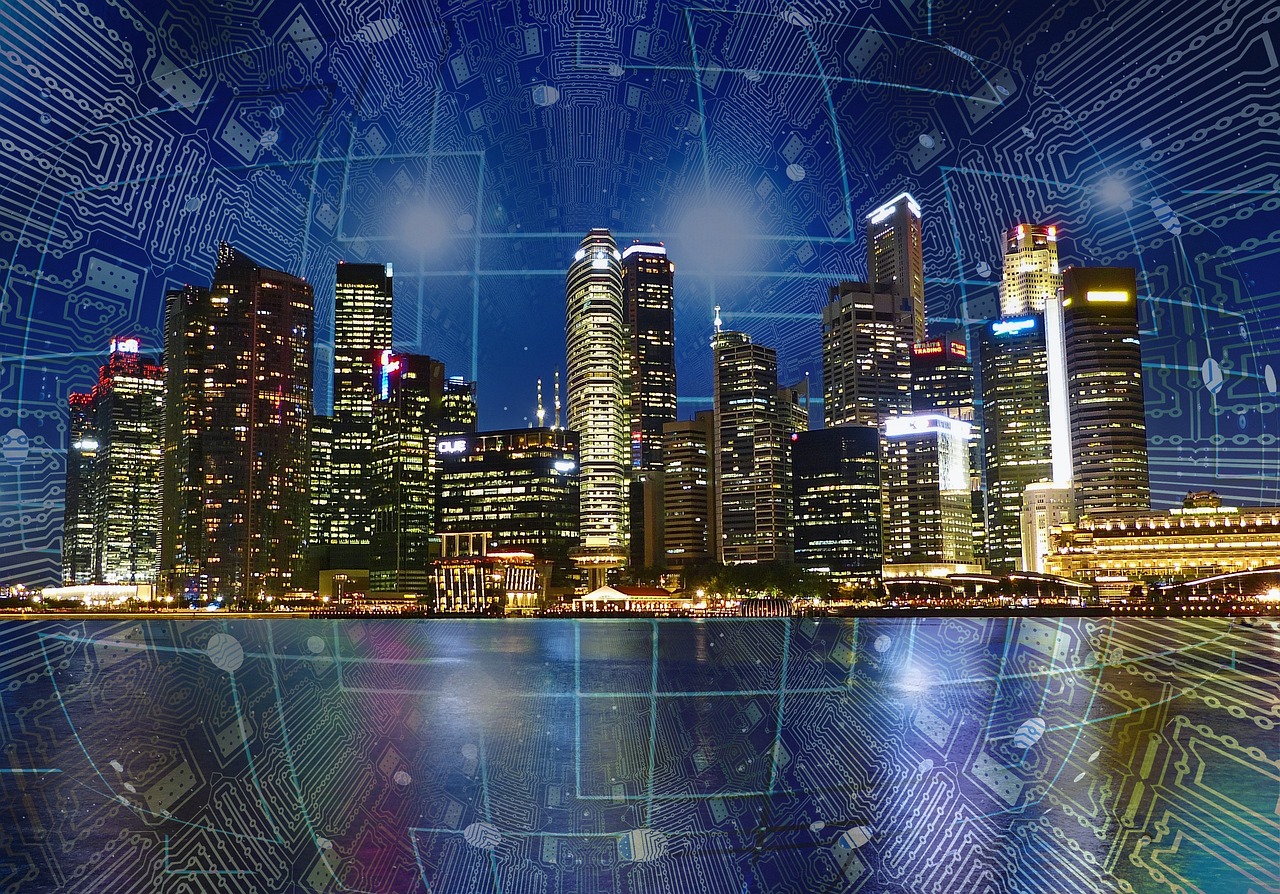
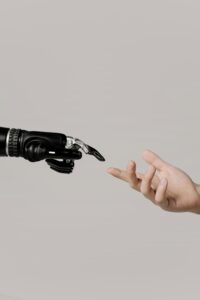
Sem comentários